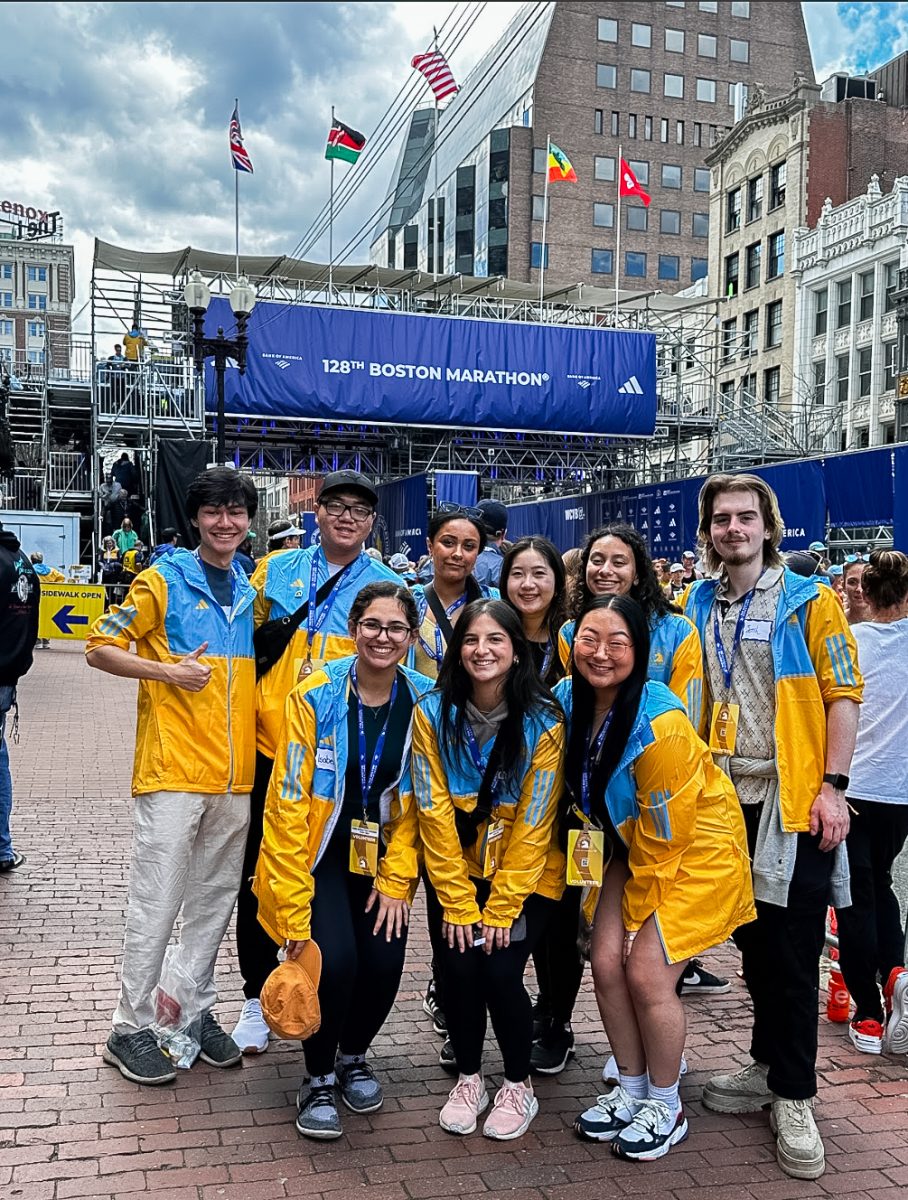During the morning of April 15, students from Delta Sigma Pi volunteered for the 128th Boston Marathon, mainly helping racers in the Para Athletics Division.
As stated on the the Boston Athletics Association website, the Para Athletics division included athletes with vision, coordination, intellectual, lower limb or upper limb impediments. Athletes with a lower limb impediment often use a wheelchair or a handcycle. The difference between these two-wheeled pieces of adaptive equipment is that a handcycle has gears that make movement more efficient. Wheelchairs on the contrary only rely on the riders’ arm strength to move.
The athletes in the para-athletics division were divided in classifications determined by the International Paralympic Committee. The International Paralympic Committee website explains that classifications group racers with others who have a similar degree of limitations ensuring fair competition.
In early January, Delta Sigma Pi Vice President of Community Service, Andrew Alswanger signed members up to volunteer for the marathon. However, Alswanger stated that their shared process of getting accepted was difficult.
“We were actually rejected from volunteering,” said Alswanger, who replied to the rejection email saying it was great that so many people were interested in volunteering. “Then out of nowhere [the volunteer manager] emailed me back saying, ‘Okay, we can squeeze you in.’” They were then eager to be involved.
One of the motivators to get involved with the Boston Marathon was Krystle Campbell’s tragic death. Campbell was a UMass Boston alum and one of the three victims of the marathon bombing of 2013.
Campbell’s death also inspired the Run for Krystle team—a team of UMass Boston faculty and staff who raised money in honor of Campbell to fund a scholarship for students in the College of Management.
To prepare for the event the Delta Sigma Pi volunteers received online training about the marathon and the different types of athletes that they would be interacting with. On the day of the event they collected their access passes and the signature yellow Boston Marathon jacket.
“First, we all helped unload the trucks, which were full of personal items of the athletes. These include things like prosthetic limbs, wheelchairs, canes and more,” said Alswanger.
Then, when the athletes finished their race, the volunteers helped the racers move from their competition equipment to their regular accommodations, such as wheelchairs. They also gave them ample refreshments and helped transport some to their respective hotels. Other volunteers gave the racers medals and shared words of congratulations.
“Many of the athletes were veterans and extremely kind and nice to everyone, especially the volunteers,” said Alswanger.
Alswanger stated that his favorite moment was interacting with Carl Morgan, a retired veteran who competed in a handcycle.

